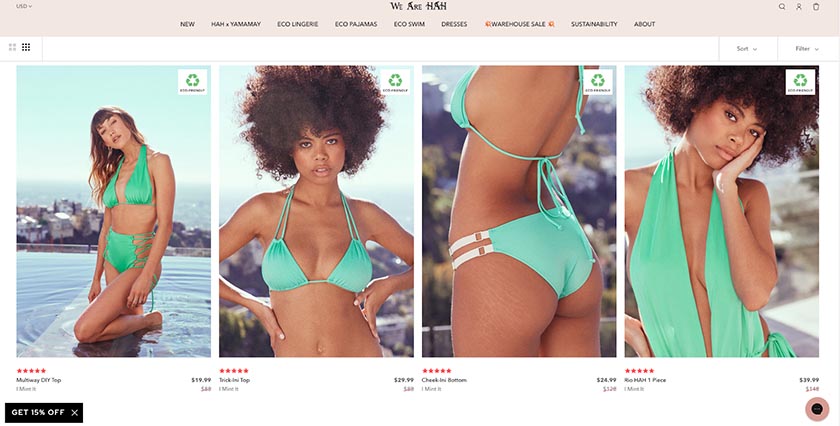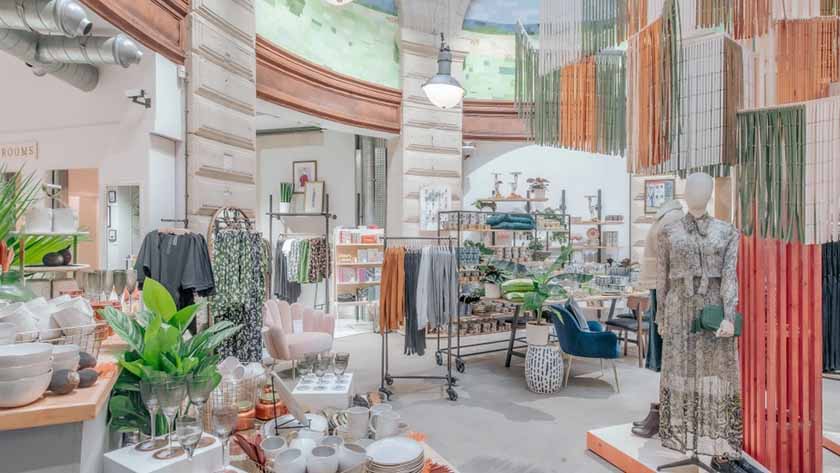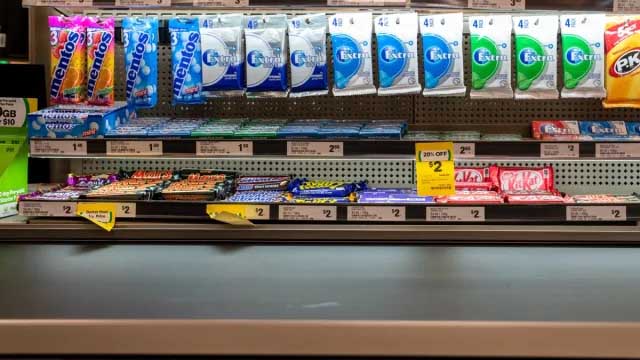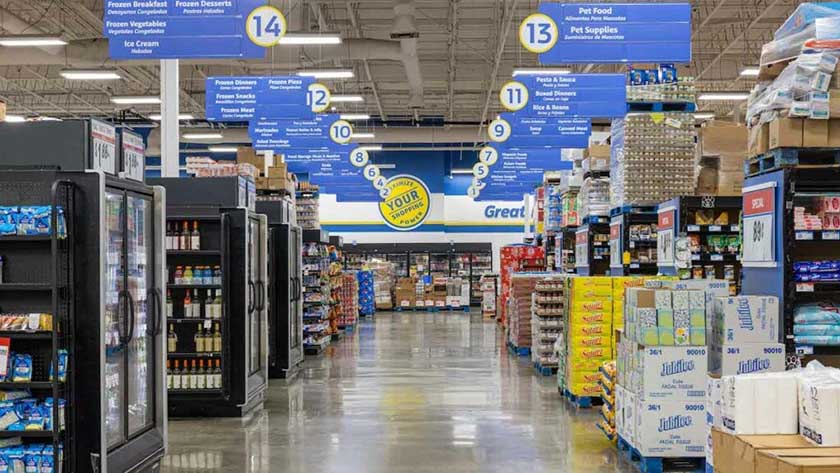A shopper profile describes the shopping behaviors, preferences, and buying habits of a customer or set of customers. Essentially, everyone shops differently and, thus, has a different shopper profile. Maybe one customer enjoys browsing slowly, and another sticks to a list and is in and out. Shopper profiles identify different types of shoppers and what ultimately drives each one’s decisions and purchases.
Understanding your customers’ profiles—how they shop and what drives them to buy—will help you increase sales by catering your store’s shopping experience to your unique shoppers’ needs.
Here are nine types of customers in retail, their general characteristics, and how to cater to their needs.
1. The Bargain Hunter
Most retailers regularly encounter bargain hunters in their shops. Also called discount shoppers, bargain hunters are usually armed with coupons or discount codes, know when all of the best sales are, and rarely buy without some sort of deal in hand.
Whereas some shoppers are looking for something sentimental, the bargain hunter’s purchase will be primarily determined by price and a sense that they are saving money.
Although bargain hunters were a shrinking group in the late 2010s, economic challenges and talks of a looming recession have inspired a resurgence of cost-conscious consumers. In fact, as people are tightening their pocketbooks in 2023, discount stores have seen up to an 18% increase in their YoY foot traffic.

Bargain hunters are always on the hunt for a good sale or deal and will rarely buy without one. (Source: Bayut)
The Bargain Hunter’s Needs
As you might have guessed, what bargain hunters need is sales and deals. If you have a large bargain shopping demographic at your store, you’ll need to create a pricing strategy or rewards system to regularly provide offerings that will satisfy their quests for deals.
How to Market to the Bargain Hunter
Unlike other types of shoppers, price is the most important purchasing factor for bargain hunters, and they will shop around, wait, and compare prices to find the best deal. While the simple solution to this would be to run constant sales, this will cut into your margins and may leave you at a revenue loss.
When deciding how you want to appeal to your bargain hunters, have a budget in mind to maintain your profit margin while still presenting discounts.
To appeal to bargain hunters and avoid running into debt, you can:
- Host sales on a predictable schedule: Many retailers have clearance sales on certain days of the week or month. Others take a more seasonal or holiday-focused approach.
- Use promotional pricing strategies: Promotional pricing is a marketing strategy that uses bundles, gift-with-purchase, or discount pricing to drive more sales while also providing shoppers with a good value.
- Try anchor pricing: This is another pricing strategy where you display the original price and your own to demonstrate that your price is better without necessarily having to run a sale.
- Clear out end-of-season merchandise: Most retailers have some leftover inventory at the end of the season; appeal to bargain shoppers by hosting a heavily advertised end-of-season sale to help move old products and make room for new ones.
- Organize flash sales: Choose a typically slow or quiet time of day or day of the week to host a limited-time sale where shoppers can get a discount on their total purchase. This will draw your bargain shoppers in when you traditionally have low sales.
- Offer points and rewards: In addition to traditional sales, you can also create a loyalty or rewards program where customers automatically get rewarded for shopping and can use their points to get money off their purchases.

Overpricing items and then marking them down by more than 50% is a great way to keep you margins and provide the illusion of a great deal. (Source: We Are HAH)
Need help identifying your customers? Using a POS system with detailed customer management and reporting can help give you the insights you need to create marketing and merchandising decisions that drive sales. Square is our top choice for small businesses because it offers valuable insights at a low price point. Visit Square to learn more.
2. The Browser
If you have a brick-and-mortar store, especially one with a lot of foot traffic, you’re probably very familiar with shoppers who are “just looking.” Browsing customers, or wandering customers, aren’t looking for a particular item or even necessarily to make a purchase. Most often, they happen to come across your store and are just looking at what you have to offer.
The Browser’s Needs
Typically, the browsing customer is motivated to make a purchase based on an experience or an emotional connection. For example, a browser might come across a candle with a smell that reminds them of their childhood. Or, they might talk with a sales associate for an hour about a fancy cheese and then buy it because they know its history and have formed an attachment.
Browsing shoppers are especially common in gift and souvenir shops, boutiques and apparel stores, bookshops, and any kind of hobby shop. They also might just be killing time. Consider how you can foster an emotional or special experience in your store without interrupting your browsing shoppers.
How to Market to the Browser
The best thing retailers can do to cater to the browsing customers is to make them feel welcomed, foster an easy and positive store experience, and stay available if anything arises, but ultimately leave them alone. To appeal to the browser, market your goods so they have a story or foster a connection without you having to intervene and make it obvious.
When working with browsing customers, retailers should:
- Give a warm welcome: Browsing customers don’t respond well to pushy sales tactics, but that doesn’t mean you should ignore them. Even if a customer is “just looking,” say hello, offer assistance, and inform them of any sales or promotions.
- Create a comfortable store environment: Retailers should pay close attention to the lighting, music, cleanliness, and overall presentation of their store. Wandering shoppers are more likely to spend time (and possibly make a purchase) in a store that’s neat and inviting, rather than harsh and unorganized. Take Anthropologie, for example. This store is ideal for the browser, with tons to look at, beautiful merchandising, and an easy-to-navigate layout.

Anthropologie is a browsing customer’s dream. (source: WWD)
- Design an effective store layout: Since browsing customers are not directly interacting with store associates, your store layout and signage serve as the primary guide; make sure popular, profitable, and bestselling items are prominently displayed.
- Offer small trinkets and easy-to-transport items: Even if shoppers are just browsing, small gifts or trendy items can still catch their attention. Curate an assortment of items that are eye-catching and easy to carry, as well as clear signage that illustrates product benefits. Browsers are often out and about, so small things they can take with them will be an easier sell for this shopper.
- Create product stories: Market your products so they have a story and people see them as more than just goods. Create displays to show how your products can fulfill a need or want and fit into your customers’ lives.
- Allow for self-sufficient shopping: Allow browsers the space they need to explore. Make sure they can find all the answers to their questions without working with an associate, so you don’t have to interrupt their shopping experience. Write instructions and answers to frequently asked questions on flyers and signs, label everything, and ensure your store is navigable.
3. The Showrooming Customer
One of the biggest perks of in-store shopping is testing out products in person for quality, color, fit, etc. However, sometimes shoppers test in person only to then buy online. This practice is known as “showrooming.”
Showrooming: When a customer goes to view a physical product in-store so that they can purchase it online.
Showrooming customers are particularly common for furniture, appliances, or other large, expensive products that are supposed to last. While large companies like Ikea have modeled their entire business on showrooming customers, showrooming can be problematic for small businesses because often, shoppers will view your product only to purchase it from another retailer at a lower price.

Showrooming is a common practice for customers looking to make large, expensive purchases of long-term pieces. (Source: Bob Vila)
The Showrooming Customer’s Needs
The showrooming customer uses their in-store experience to get a feel for the product, scout out its price, and ensure that they are making the right decision. They then choose to purchase online to get an easier shipping and handling process and the best price. If you can give the showrooming customers peace of mind and simplify their shopping process, you will meet their needs and convert them into an in-store sale.
How to Market to the Showrooming Customer
In addition to meeting the needs of their showrooming, retailers need to offer these customers incentives to shop in-store or with their specific brand.
To appeal to showrooming customers, retailers should:
- Sell specialized or unique products: The easiest way to ensure that customers don’t purchase online from a competitor is by selling products they can only get from your store. Merchandise such as private label products, custom-made items, or pieces from local suppliers are great options for creating exclusivity around your products.
- Start a loyalty program: A points-based rewards or loyalty program will incentivize shoppers to purchase from your business instead of a different online store because they can eventually earn discounts or free products.
- Offer product customization: Offer free in-store monograms or engravings on certain products or with a minimum purchase to incentivize shoppers to purchase in-store.
- Have a user-friendly, up-to-date website: Not every customer will buy in-store; make sure your online store and social media profiles are up-to-date and user-friendly so shoppers can find the product they saw in-store and buy online.
- Offer warranties and price matching: Showroomers are often searching for the best deal and assurance that they are getting a good product. Show them that you can provide solutions to those apprehensions with product warranties and price matching.
- Streamline a hassle-free shipping and handling process: Make yourself competitive with online retailers by offering shipping and local delivery services so that customers don’t have to worry about transporting items themselves.
- Offer assembly services: Set yourself above the online big-box stores by offering assembly services for relevant products. Remember, showrooming shoppers are looking for ease, so cater to that need.
Learn more about showrooming and webrooming customer behaviors.
4. The Impulse Buyer
Impulse shoppers make unplanned purchases based on items that appeal to them at the moment. I’m sure you’ve been in line at the grocery store or convenience shop and have grabbed a pack of chips at checkout. That’s an impulse buy. And, according to a 2022 survey, you are not alone—consumers in the US spent an average of over $300 on impulse purchases each month.

Grocery stores will line their checkout aisles with impulse-buy items to encourage the impulse shopper. (Source: Best Life)
Typically, impulse shopping is often buying small items that catch people’s attention. It can also, however, be retail therapy or emotional shopping. This type of impulse buying generally involves large purchases with little forethought.
The Impulse Buyer’s Needs
Whereas other shoppers have clearly defined needs, the impulse buyer operates not on necessity but rather on impulse. This makes impulse buyers’ needs hard to predict, but we can capitalize on their general buying habits. As previously mentioned, impulse buyers gravitate toward small, typically inexpensive things that they can tack on at the end of a purchase without much thought.
If not small and inexpensive, then the other kind of impulse buyer tends to make spur-of-the-moment larger purchases. Creating an attentive staff, good product displays, and an easy-to-shop space will help cater your in-store experience to the impulse shopper’s needs.
Another important thing for the impulse buyer is their in-store experience. If your merchandising and branding don’t spark their interest, the impulse buyer won’t bite. Create a fun experience and help foster emotional attachments to your products to ensure the impulse buyer is happy and engaged.
How to Market to the Impulse Buyer
Retailers can appeal to impulse shoppers by having friendly and helpful store associates, forging product connections, simplifying the buying experience, and using smart merchandising.
Retailers looking to cater to impulse buyers can:
- Make it easy to buy: Since impulse shoppers are buying on a whim, they want to make their purchases quickly and easily. Lines will turn the impulse buyer away, so ensure you have adequate registers or equip your staff with mobile checkout devices so that no impulse sale is lost due to traffic flow. Self-service kiosks are also a great option.
- Use labels, signs, and instructions: You can simplify the impulse buyer’s shopping experience through clear product labels and instructions. Make your store easy to navigate and engage with—the impulse buyer isn’t going to be asking for help to make their purchase, so make sure they don’t have to.
- Train an attentive staff: An attentive staff will make all the difference for the big-ticket impulse buyer. By making product suggestions, helping with sizing, and overall accelerating and simplifying your customer’s experience, your staff will be able to better capitalize on the impulse shopper.
- Place small, inexpensive items by the register: The cash register is one of the top places the impulse buyers make their move. Line your register with small, inexpensive items that people can add to their carts on a whim. Think gum, cards, sunglasses, keychains, and other small, inexpensive items.
- Promote add-ons: Another thing that might entice impulse shoppers is add-ons. Suggest or market an accessory to finish an outfit or suggest headphones to go along with their phone. Often, when the big item is bought without impulse, it is easy to add small, compatible items to the more significant purchase.
Learn more with our guide to Impulse Buying Statistics Retailers Should Know.
5. The Mission-driven Shopper
Mission-driven buyers are on the hunt for particular products or are shopping from a list. They are even sometimes called “list shoppers” because they so often come with a physical litany of things they want to buy. Others have termed them “need-based” and “reluctant” shoppers because, for them, buying is driven strictly by need and not because they necessarily enjoy shopping.

Mission-driven shoppers know what they need and are not interested in browsing.
(Source: Video Hive)
The Mission-driven Shopper’s Needs
Overall, mission-driven shoppers want their shopping experience to be easy and fast and to fulfill their needs. Remember, shopping is not something the mission-driven customer enjoys, so anything you can do to make their experience pain-free will boost their loyalty to your brand and make them more likely to return.
How to Market to the Mission-driven Shopper
Ease is the central thing that your marketing initiatives should address. Offering services that will streamline your shoppers’ experience and merchandising so that things are easy to find will ensure that your business is ready to facilitate easy, pain-free shopping.
To appeal to mission-driven buyers, retailers should do the following:
- Offer buy-online, pickup in-store (BOPIS): Time-crunched shoppers often choose to purchase from stores that let them place orders online and pick them up the same day. Offering pickup services will also completely cut out all of the actual shopping for a mission-driven buyer.
- Use signage: Make sure to mark the various areas of your store with signs and list the products or categories of products you can find in each zone. This will make it easier for mission-driven shoppers to find what they need without having to wander or ask for help.

Use signs to help shoppers find what they need without having to search or ask for assistance. (Source: King Retail Solutions)
- Have gift guides ready: Make shoppers’ lives easier by offering gift guides and other inspirational materials to take the thinking out of shopping and make your customers’ missions easier to accomplish.
- Utilize cross-merchandising: Shoppers in a hurry will appreciate items conveniently placed, such as bread by the deli counter or limes next to the beer display. Consider what items are typically purchased together and merchandise them near each other for convenient shopping.
- Have a clear store layout: Having an easy-to-navigate shop primarily comes down to the store layout that you choose. Be sure that you create good traffic flow and clear lines of sight so your store is easy to shop.
6. The Indecisive Patron
Indecisive shoppers are looking to make a purchase but are reluctant or hesitant to do so because of price, information overload, or insufficient information. I know I ran into this type of shopper all the time at my store. They would try things on but struggle to make a decision and constantly make excuses as to why they shouldn’t buy the piece.
Ultimately, I learned that being hyper-attentive is the best way to appeal to indecisive shoppers so that I could calm any hesitations and answer any questions before they got into their own heads.
The Indecisive Patron’s Needs
The indecisive shopper needs someone or something to boost their confidence and make them secure in their purchase. Anything that you can do to make the indecisive shopper feel more assured of their selection and give them a slight push to make a purchase will help calm their hesitation.
You want to be sure not to push the indecisive shopper too hard, as you could end up making them uncomfortable. Remember, this shopper wants to purchase something, so you should offer helpful nudges without creating an irritating experience. Meet hesitation with assurance, but if you’re getting firm negative responses, move on and try suggesting another product.
How to Market to the Indecisive Patron
When working with indecisive shoppers, retailers should serve as quasi-personal shoppers or shopping guides. Indecisive shoppers have high purchase intent; they just do not know the right product yet. Having top-notch customer service associates is crucial for appealing to indecisive shoppers and securing a sale.
When working with indecisive shoppers, retailers should:
- Ask questions: Determine the shopper’s buying needs by asking open-ended questions about who and what they are shopping for so that you can give precise recommendations. This will allow you to provide better solutions to their problems and calm any hesitations.
- Give honest advice: Shoppers who have a hard time making a final purchasing decision will appreciate honest advice, including personal experience or feedback from other customers. Telling someone that a piece is unflattering or giving them a piece of honest advice will build trust and result in more sales.
- Use visuals and/or data: Signage and marketing tools that display features and benefits of the products will help shoppers weigh their options and better understand your products. Feedback on bestsellers, product comparisons, pricing information, and expert reviews will all help make the indecisive shopper more assured and ready to purchase.
- Have a flexible return policy: Having a return policy or warranty can help assuage any fears of the product not living up to expectations.
- Offer product suggestions: Product suggestions will help your customer feel like they’re getting the best products put in front of them, allowing them to feel secure in the purchase decision.
7. The Educated Consumer
With increasing access to product information, many of today’s shoppers fall into the educated or well-informed shopper profile. In fact, nearly 70% of online shoppers read between one and six reviews before making a purchase. The educated shopper researches products or a store’s inventory online, reads customer reviews, and scans general pricing information before visiting the store. They will also typically have an idea of what they want to buy by the time they make it into a store.
The Educated Consumer’s Needs
While the educated shopper can be tricky to help, they do have a few needs that you can use your marketing to address. The educated buyer wants to see the online products that you have in-store. Additionally, even though they have done research, the educated buyer will still want to ask questions to be sure that they really understand your products before making a purchase.
For example, at my boutique, we would often get customers who had clearly viewed our website or social media pages before coming in. In this case, they always had questions and wanted to see the exact pieces they’d been eyeing. By furthering their product knowledge and giving them a chance to see the items in person, we were able to elevate their in-store experience and satisfy their need for understanding.
How to Market to the Educated Consumer
The biggest thing you need to provide the educated buyer is a cross-channel shopping experience that adds value to what they already know. This includes continuously updating your website and merchandising displays, offerings in-store only products or services, and having a very knowledgeable sales staff.
When working with the educated customer, you should:
- Keep your website and store up to date: Most educated shoppers will check out your store online before coming in so they can see what’s in stock. To avoid disappointment, make sure the things you offer online are also available in-store, and that your website is up-to-date with all your new offerings. An integrated inventory management tool will help.
- Offer a great value: Since educated shoppers typically already know about pricing and features, these factors won’t wow them. Offer something extra like product customization, exclusive features, a special member price, or at least information that they wouldn’t have been able to find elsewhere.
- Incorporate customer reviews: Including customer reviews on your website and even in-store is a great way to boost buyer confidence for the educated shopper and give them peace of mind as they explore your selection.

Amazon bookstores add customer reviews and ratings for books, so customers can see what real readers are thinking.
(Source: Econsultancy)
- Provide a positive shopping experience: Many shoppers return to retailers not because of their product selection or even price point, but rather because of the overall experience they had shopping with you. Your customer service, loyalty program, and merchandising will make or break your shopper’s time in your store, so enhance those elements to create something memorable and positive for your shoppers.
- Equip your staff with product knowledge: Empower associates to become experts on your products so they can answer any questions and provide a level of expertise not found through online research. At my store, for example, we had a binder with product information that included sizing, typical life cycle, styling suggestions, and compositions. Associates could reference and study the binder in their spare time so that they were ready to answer any customer concerns.
8. The Loyal Customer
Loyal customers, or regular customers, are every retailer’s favorite. The loyal customer is someone who visits your shop often and makes regular purchases. You might even know them by name and have a rapport with them.
The loyal customer is a particularly important shopper profile subset due to their potential for profitability. In fact, a commonly cited retail statistic is that if 20% of your customer base is loyal, they will make up 80% of your revenue.
The Loyal Customer’s Needs
To keep loyal customers happy, retailers should recognize their loyalty and treat them like VIP customers every time they come in. This will create an incentive to continue to be loyal and maintain an affiliation with your brand.
At my store, for example, we had several women who came in almost every week to see our new merchandise. I always made sure to address these shoppers by name and pull styles that I thought would flatter them. This helped to continue to foster their loyalty and rewarded them for choosing our brand.
How to Market to the Loyal Customer
Marketing to the loyal customer is all about making them feel special for their loyalty. They already like your brand and the experience you have to offer, so it is up to you to elevate their experience with special treatment and rewards.
- Reward your regular customers: Host events or promotions and offer exclusive rewards for your loyal customers to let them know they are appreciated.
- Start a referral program: Regular shoppers are likely already referring friends and family to your store. Start an official referral program to track your top-referring customers and reward them for boosting your business.
- Ask for their input on new products: Send out a survey or hold a focus group with your loyal customers to get their feedback on new or potential products. They’ll love being involved in the process, and you can purchase those new products with confidence knowing customers will buy them.
- Get to know your loyal customers: It’s not hard to identify who your loyal customers are. Create a list with their names, customer personas and profiles, general needs, and shopping styles for all your associates to access. If you can demonstrate you value your loyal customer as much as they value your business, you’re sure to impress them and continue to strengthen their loyalty.
- Create a loyalty program: Rewards shoppers for what they are already doing and continue to build their loyalty with a loyalty rewards program.
Interested in starting a loyalty program? Learn more about starting a loyalty program with our guides on how to create a loyalty program, customer loyalty program ideas & examples, and the best loyalty program software.
9. The Chatty Cathy
The talkative customer is another type of store shopper you will likely encounter. Unlike the browser or the mission-driven shopper, the talkative customer wants to make small talk with store associates. Not only that, they are more likely to divulge exactly what they want, provide contextual details, and discuss their thoughts as they explore products. They want your input and often even need it to make a decision.
The Chatty Cathy’s Needs
At the end of the day, the chatty customer wants you to engage with them. They want you to ask questions, share your input, and be a part of their shopping journey from ideation, through searching, all the way to purchase. You should be their sounding board, provide your ideas, offer assistance, and validate their decisions.
How to Market to the Chatty Cathy
If you find that you have a chatty customer base or a large chunk of your customer base wants additional help and guidance through the shopping process, try these techniques to keep them happy and making purchases.
- Provide an informative greeting: A greeting will not only open the door for the chatty customer to engage, but if you provide extra information about sales, new arrivals, or offers, they will likely ask you more about them, opening the door for your associates to start selling.
- Provide one-on-one assistance: As much as possible, seek to have one associate work with a chatty customer the whole time. This way, the customer won’t have to repeat information, and they can form a relationship with one associate.
- Help them find what they are looking for: If your chatty customer comes in with a product in mind, help them find it. Use the information they give you to provide the best customer service and to personalize their shopping experience.
- Remember the chats: A chatty customer will be impressed if you can remember what they talked about the last time they were in and will be more likely to form a relationship with your brand and become loyal. In whatever forum you log your customers, add shopper info and note any important information they shared.
- Return the chat: If a chatty customer is chatting with you, you should seek to engage with them and meet them at their level. In other words, return their enthusiasm with enthusiasm and try to keep the conversation going.
Bottom Line
As a retailer, you will run into all kinds of shoppers, all with their own unique needs and behaviors. Learning which types of customers most often visit your store takes time, but identifying your shoppers’ profiles will be the first step to creating an in-store experience that will serve them and, by extension, your business. Use this guide to help you identify what kinds of shoppers frequent your business, and watch as you meet their needs and get the sales rolling.
